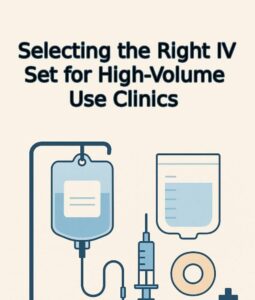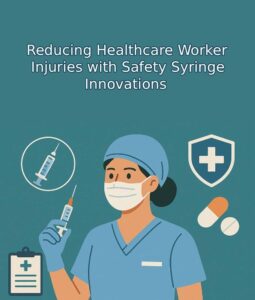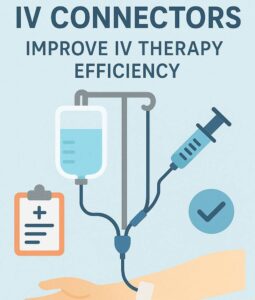Introduction:
When sourcing disposable medical devices in today’s highly regulated global market, B2B Medical Device buyers must go beyond pricing and lead time. Ensuring you’re working with an audit-ready supplier, having strong factory audit prep knowledge, and understanding basic ISO inspection tips are essential to ensuring product quality, regulatory compliance, and long-term supplier reliability. Whether you’re managing a new vendor evaluation, preparing for a third-party audit, or reviewing your current supplier list, being audit-ready is key to sustainable and risk-free procurement.
In this guide, we’ll explore how medical device buyers can successfully assess suppliers, prepare for audits, and implement proactive compliance strategies that align with international standards. Know more..
Why Medical Device Buyers Need Audit Readiness
The B2B medical device procurement process is governed by stringent standards like ISO 13485, FDA 21 CFR Part 820, and CE regulations. With growing scrutiny from government agencies and increased customer awareness, buyers must ensure that their manufacturers are consistently audit ready suppliers.
Key audit goals include:
- Verifying quality management systems (QMS)
- Confirming traceability of materials
- Assessing hygiene and sterility controls
- Evaluating packaging, labeling, and documentation accuracy
- Reviewing CAPA (Corrective and Preventive Actions) protocols
Having a plan for factory audit prep helps avoid last-minute surprises and demonstrates a commitment to long-term quality partnerships.
Step-by-Step Guide to Preparing for a Medical Device Supplier Audit
Step 1: Vet for Audit Ready Supplier Credentials
Before initiating the audit process, ensure the manufacturer presents themselves as an audit ready supplier. This includes:
- Valid ISO 13485 certification
- FDA registration (if exporting to the U.S.)
- CE Marking or MDSAP compliance
- Recent third-party audit reports (TÜV, SGS, etc.)
- Internal audit history and CAPA records
An audit ready supplier should have organized documentation, digital traceability systems, and clean audit trails. Don’t hesitate to request this evidence in your vendor qualification stage.
Step 2: Create a Custom Audit Checklist
Every B2B buyer’s product line and market compliance needs are different. Your factory audit prep should include a customized checklist based on:
- Product category (e.g., IV sets, syringes, catheters)
- Geographic compliance requirements (FDA, CE, SFDA, WHO PQ)
- Sterility and packaging standards
- OEM/private label protocols
- Environmental or social compliance
Build this checklist collaboratively with your QA/QC teams to ensure alignment across engineering, compliance, and procurement departments.
Step 3: Review Quality Control Processes On-Site
A physical or virtual site visit allows you to verify whether the audit ready supplier truly follows documented processes. During the walkthrough, focus on:
- Material receiving and inspection logs
- In-process controls and final inspection systems
- Device testing equipment (e.g., leak tests, tensile strength, sterility validation)
- Cleanroom protocols (gowning, airflow, disinfection procedures)
Ask staff to demonstrate how they trace a batch from raw material to finished product. This is one of the best ISO inspection tips to evaluate actual compliance versus paperwork.
ISO Inspection Tips Every B2B Buyer Should Know
Auditing against ISO standards—especially ISO 13485—is the industry gold standard for medical devices. Below are expert ISO inspection tips to help your audit succeed:
✅ Tip 1: Ask for the Quality Manual Early
This document outlines how the supplier implements their QMS and serves as the roadmap for your audit. Ensure it’s reviewed before the audit date.
✅ Tip 2: Trace a Product Sample End-to-End
Choose a product SKU and ask to see its production batch, QC report, sterilization certificate, and shipment packaging—all the way to the invoice.
✅ Tip 3: Review Non-Conformance and CAPA Records
A compliant supplier will have clear logs of past non-conformances and a root-cause corrective action plan. These records help assess ongoing quality culture.
✅ Tip 4: Validate Employee Training Systems
Verify that machine operators and QC technicians are trained on the latest SOPs. Ask to see training logs, job descriptions, and re-certification plans.
✅ Tip 5: Evaluate Internal Audit Process
Suppliers should be conducting their own internal audits quarterly or annually. Review past reports and follow-up actions.
Factory Audit Prep: What Buyers Must Bring
To ensure a smooth factory audit prep, B2B buyers should arrive equipped with:
- Audit agenda and scope (sent at least 1 week prior)
- Product drawings/spec sheets for reference
- Any customer-specific compliance or packaging guidelines
- NDA or audit agreement (to protect proprietary information)
- Notetaking tools and camera (if allowed)
Also, make sure you assign roles—one person handles quality, another reviews compliance documentation, and another focuses on production lines.
Common Red Flags During a Supplier Audit
While many suppliers appear compliant on the surface, B2B audits often uncover red flags, including:
- Outdated or missing certifications
- Inconsistent batch records or incomplete traceability
- Lack of regular internal audits or training
- Dirty cleanrooms or poor gowning compliance
- Non-calibrated testing equipment
- Inadequate pest control or storage protocols
If any of these issues arise, it’s a sign the supplier may not be a reliable audit ready supplier and could risk your regulatory standing.
Digital Tools and Audit Technology
Modern audit ready suppliers now use digital QMS platforms like:
- MasterControl
- Greenlight Guru
- Qualio
- TrackWise
Ask suppliers if they’re using these systems for CAPA, document control, and training logs. Digital records make your audit easier and faster to complete.
Remote Audit Options Post-COVID
Even though site visits are returning, remote audits remain a powerful tool. Here’s how to adapt:
- Use Zoom, MS Teams, or secure factory tour platforms
- Request a full walk-through of the production floor
- Use pre-recorded videos for areas with poor connectivity
- Require digital documentation scans in advance
- Always follow up with a site visit when possible
A good factory audit prep plan includes a hybrid model of virtual and physical assessments.
Maintaining a Long-Term Audit Strategy
Auditing isn’t a one-time event. B2B buyers should develop an annual or semi-annual audit program that includes:
- Supplier segmentation (high-risk, low-risk, strategic)
- Re-certification schedules
- Third-party audit outsourcing options
- Corrective action tracking systems
Use these strategies not only to maintain compliance but to foster stronger supplier partnerships, continuous improvement, and product innovation.
Final Thoughts
A successful medical device supply chain relies on the strength of its audit processes. Working only with audit ready suppliers, maintaining robust factory audit prep, and applying consistent ISO inspection tips ensures the safety, reliability, and compliance of your disposable medical devices.
Auditing may seem complex, but with the right planning, tools, and supplier cooperation, it becomes a strategic asset—not just a checklist. Whether you’re scaling your supplier base or reviewing a long-term partner, audit readiness protects your brand and the patients you serve.






